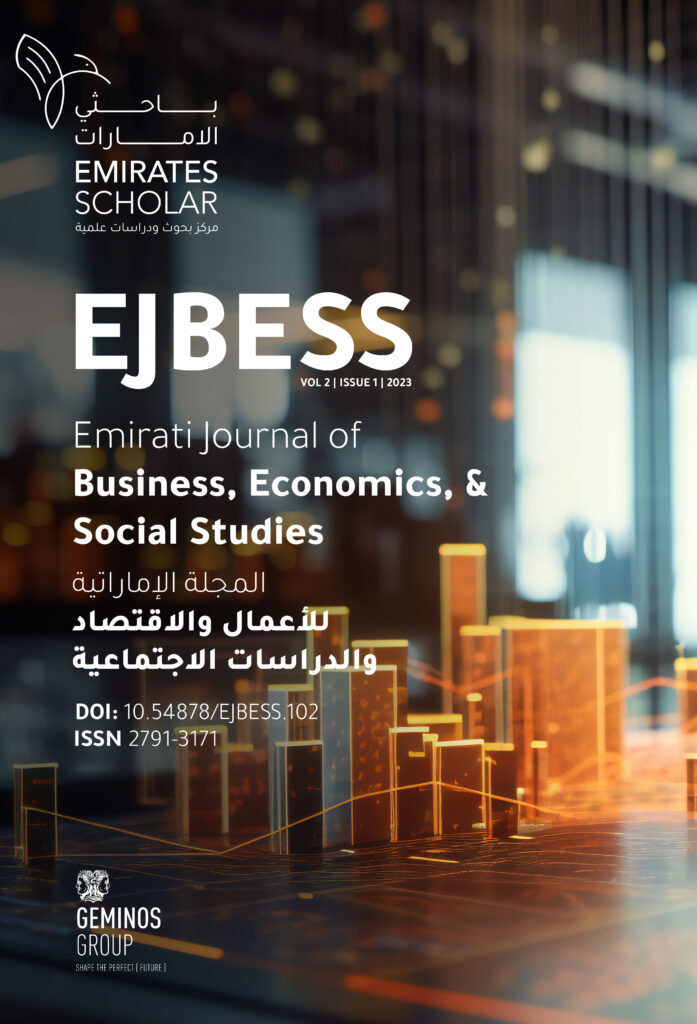Published 2024-03-12
Keywords
- Geomarketing,
- Marketing space,
- Competitiveness,
- urban,
- Attractiveness of territories
- urban Development,
- land used,
- data,
- mapped,
- Mapping,
- behavioral,
- Segmentation,
- spatial,
- geographic Targeting,
- geospatial,
- Intelligence,
- Mégadonnées ...More
How to Cite
Abstract
The geomarketing, which combines data analysis with location-based marketing, is a powerful lever for enhancing the attractiveness and competitiveness of cities. In Morocco, the growing urbanization in a context of urbanization calls for innovative approaches to urban development.
The detailed analysis of the spatial dynamics using the tools of the geomarketing (flow mapping, geo-location of consumers, segmentation, geographical, etc) can better understand the uses and needs in a given territory. These insights can effectively guide the public and private strategies in terms of urban planning, mobility, economic development and tourism.
However, the respect of ethics and privacy in the use of data technology remains a key issue. To develop in a responsible manner the use of geomarketing in Morocco, frames, protectors of the personal data is required, as well as the strengthening of the research and public-private partnerships virtuous.
Thoughtful integration of the geo-marketing can help the moroccan cities to improve their competitiveness, sustainability and the quality of life of citizens.
References
- Andrews, J. G., Buzzi, S., Choi, W., Hanly, S. V., Lozano, A., Soong, A. C., & Zhang, J. C. (2014). What will 5G be? IEEE Journal on selected areas in communications, 32(6), 1065-1082.
- Bandyopadhyay, R., & Morais, D. (2005). Representative dissonance: India's self and western image. Annals of Tourism Research, 32(4), 1006-1021.
- Beritelli, P., & Bieger, T. (2014). From destination governance to destination leadership–defining and exploring the significance with the help of a systemic perspective. Tourism Review, 69(1), 25- 46.
- Berke, P., Godschalk, D., Kaiser, E., & Rodriguez, D. A. (2006). Urban land use planning. University of Illinois Press.
- Baina, K. (2013). The geomarketing in Morocco, the case of the application. In the 9th edition of the International Conference in Marketing, ESCA.
- Cao, Y., & Yang, J. (2019). Towards Privacypreserving Analytics for Spatial Data. Proceedings of the 25th ACM SIGSPATIAL International Conference on Advances in Geographic Information Systems, 153-162.
- Chatterjee, S., Kar, A. K., & Gupta, M. P. (2021). 5G adoption and diffusion of innovation theory: A research agenda for developing economies. International Journal of Information Management, 57, 102294.
- Chen, M., Mao, S., Liu, Y. (2014). Big data: A survey. Mobile networks and applications, 19(2), 171-209.
- Columbus, L. (2019). How 5G Will Improve Cybersecurity. Forbes.
- ENISA (2019). NIS investments for 5G capabilities. European Union Agency for Cybersecurity.
- Ericsson (2020). 5G for business: a 2030 market compass. Ericsson Report.
- Fitchard, K. (2015). Analyzing Verizon's existing fiber routes shows Fios expansion plans as well as 5G ambitions. RCR Wireless News.
- GSMA (2020). 5G Implementation Guidelines: ICT skills requirements in the 5G era. GSMA Report.
- Hadas, Y., & Ranjitkar, P. (2012). Modeling public-transit connectivity with spatial quality-oftransfer measurements. Journal of Transport Geography, 22, 462-471.
- Han, C., Harold, T., Armour, S., Krikidis, I., Videv, S., Grant, P. M., ... & Thompson, J. S. (2014). Green radio: radio techniques to enable energy-efficient wireless networks. IEEE communications magazine, 49(6), 46-54.
- ITU (2019). Setting the Scene for 5G: Opportunities and Challenges. International Telecommunications Union Report.
- ITU (2021). The Last-Mile Internet Connectivity Solutions Guide. International Telecommunications Union Report.
- Kedzior, S. (2020). The digital transformation of SMEs. In Digital Tools for Seamless Learning (pp. 409-428). IGI Global.
- Legacy, C., Curtis, C., & Sturup, S. (2012). Is there a good governance model for the delivery of contemporary transport policy and practice? Year examination of Melbourne and Perth. Transport Policy, 19(1), 8-16.
- Litman, T. (2022). Smart Transportation Emission Reductions. Victoria Transport Policy Institute.
- Mageean, J., & Nelson, J. D. (2003). The evaluation of demand responsive transport services in Europe. Journal of Transport Geography, 11(4), 255-270.
- Marsden, G. (2006). The evidence base for parking policies—a review. Transport policy, 13(6), 447-457.

